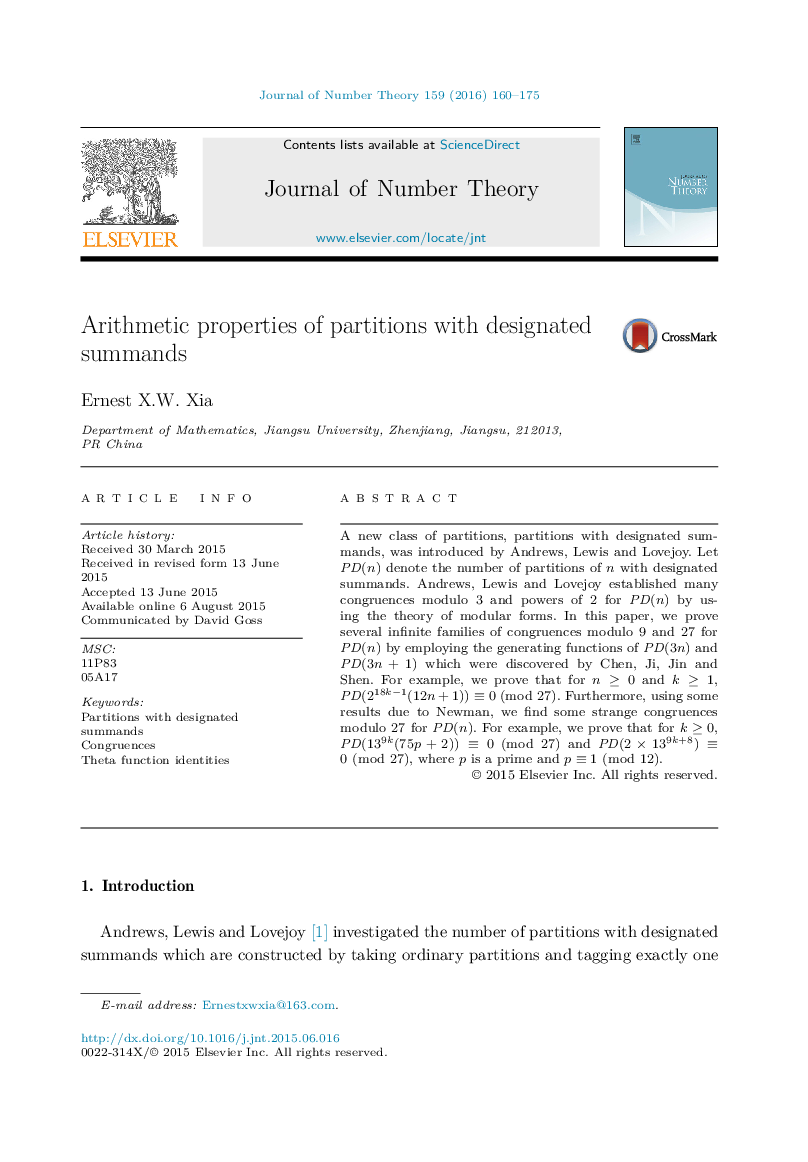| Article ID | Journal | Published Year | Pages | File Type |
|---|---|---|---|---|
| 4593448 | Journal of Number Theory | 2016 | 16 Pages |
A new class of partitions, partitions with designated summands, was introduced by Andrews, Lewis and Lovejoy. Let PD(n)PD(n) denote the number of partitions of n with designated summands. Andrews, Lewis and Lovejoy established many congruences modulo 3 and powers of 2 for PD(n)PD(n) by using the theory of modular forms. In this paper, we prove several infinite families of congruences modulo 9 and 27 for PD(n)PD(n) by employing the generating functions of PD(3n)PD(3n) and PD(3n+1)PD(3n+1) which were discovered by Chen, Ji, Jin and Shen. For example, we prove that for n≥0n≥0 and k≥1k≥1, PD(218k−1(12n+1))≡0(mod27). Furthermore, using some results due to Newman, we find some strange congruences modulo 27 for PD(n)PD(n). For example, we prove that for k≥0k≥0, PD(139k(75p+2))≡0(mod27) and PD(2×139k+8)≡0(mod27), where p is a prime and p≡1(mod12).
